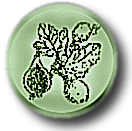Subsystem: DAP (1,3-diaminopropane) production
This subsystem's description is:
Polyamines, like DAP (1,3-diaminopropane) are small organic polycations present in micro-molar to millimolar concentrations in all cells. It is likely that polyamines were present in the last universal common ancestor and can be considered as part of the minimal metabolome in extant cells. Polyamines are important for cell proliferation, growth, and development, and triamines, such as spermidine, are thought to bind to RNA and influence ribosome function. Eukaryotic and archaeal cells use spermidine as the aminobutyl donor for the biosynthesis of the unique and essential amino acid hypusine found only in translation initiation factor 5A. In addition to core physiological roles, polyamines in bacteria are also involved in siderophore biosynthesis, swarming, and biofilm formation. Norspermidine[3,3'-diaminodipropylamine]
For more information, please check out the description and the additional notes tabs, below
| Literature References | Cloning and expression in Escherichia coli of the gene encoding a novel L-2,4-diaminobutyrate decarboxylase of Acinetobacter baumannii. Ikai H FEMS microbiology letters 1994 Dec 1 | 7813892 | An alternative polyamine biosynthetic pathway is widespread in bacteria and essential for biofilm formation in Vibrio cholerae. Lee J The Journal of biological chemistry 2009 Apr 10 | 19196710 | Diamine Biosynthesis: Research Progress and Application Prospects. Wang L Applied and environmental microbiology 2020 Nov 10 | 32978133 |
|---|
| Web links | V. cholerae polyamine biosynthetic pathways |
|---|
| Diagram | Functional Roles | Subsystem Spreadsheet | Description | |||||||||
Oops! We thought there was a diagram here, but we can't find it. Sorry
Polyamines, like DAP (1,3-diaminopropane) are small organic polycations present in micro-molar to millimolar concentrations in all cells. It is likely that polyamines were present in the last universal common ancestor and can be considered as part of the minimal metabolome in extant cells. Polyamines are important for cell proliferation, growth, and development, and triamines, such as spermidine, are thought to bind to RNA and influence ribosome function. Eukaryotic and archaeal cells use spermidine as the aminobutyl donor for the biosynthesis of the unique and essential amino acid hypusine found only in translation initiation factor 5A. In addition to core physiological roles, polyamines in bacteria are also involved in siderophore biosynthesis, swarming, and biofilm formation. Norspermidine[3,3'-diaminodipropylamine] | ||||||||||||




